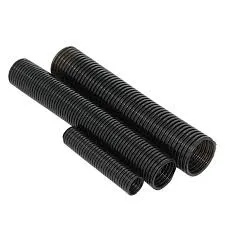energy chain cable carrier
Understanding Energy Chain Cable Carriers A Comprehensive Overview
In today's fast-paced industrial landscape, efficiency and safety are paramount. One of the critical components that contribute to these aspects is the energy chain cable carrier, often referred to simply as a cable carrier or drag chain. These devices play an essential role in managing and protecting the cables and hoses used in various machinery and equipment, ensuring smooth operation in dynamic settings.
What is an Energy Chain Cable Carrier?
An energy chain cable carrier is a flexible solution designed to guide and protect cables and hoses from wear and tear while they move with machinery. Typically made of durable plastic or metal, these carriers are comprised of multiple links connected in a chain-like fashion, allowing for smooth movement and bending around corners. They can accommodate various cable types—including power, data, and pneumatic hoses—making them versatile for different applications.
Key Features and Benefits
1. Protection of Cables One of the primary functions of an energy chain cable carrier is to protect cables from external damage such as abrasion, crushing, and environmental factors like dust and moisture. This prolongs the lifespan of the cables and reduces maintenance costs.
2. Organized Cable Management Energy chains offer a structured approach to cable management. This organization minimizes the risk of tangled wires and improves the overall aesthetics of industrial setups, making maintenance and troubleshooting easier.
3. Flexibility in Movement These cable carriers are specifically designed to facilitate movement. They can be used in linear, curved, or even three-dimensional applications, making them ideal for robotic systems, CNC machines, and assembly lines where machinery requires flexibility in motion.
4. Noise Reduction The use of energy chains can significantly reduce noise levels in industrial environments. By containing and guiding cables, they minimize the chances of cables hitting against one another or the machinery, which can lead to loud clattering sounds.
energy chain cable carrier

5. Customization Options Many manufacturers offer customizable energy chains to suit specific operational requirements. They can be tailored in terms of size, material, and configuration, making them adaptable to various applications.
Applications of Energy Chain Cable Carriers
The applications for energy chain cable carriers are vast, spanning numerous industries
- Manufacturing In automated production lines, energy chains help manage the multitude of cables associated with machinery, ensuring smooth and uninterrupted operations.
- Robotics With their ability to bend and twist, energy chains are integral to robotic systems, allowing for dynamic movements while protecting essential cables.
- Automotive industry Used in assembly lines for vehicles, these carriers prevent cable damage, ensuring seamless operation of machinery involved in production.
- CNC Machines Energy chains are critical in CNC applications where precise movements and cable protection are paramount for maintaining quality and efficiency.
Conclusion
In conclusion, energy chain cable carriers are indispensable components in modern industrial applications. They offer essential protection for cables and hoses, enhance organizational efficiency, and contribute to safer working environments. As industries continue to innovate and evolve, the demand for reliable cable management solutions will only grow, solidifying the role of energy chains as a standard in machinery and robotic applications. Investing in high-quality energy chain solutions is a proactive approach to enhancing performance, minimizing downtime, and ensuring the longevity of equipment in any operational setting.








